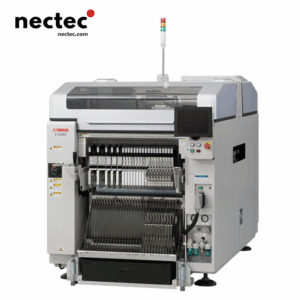In the fast-paced world of manufacturing, efficiency and precision are paramount. Among the myriad of technologies that facilitate production processes, 픽 앤 플레이스 머신 stand out as essential tools for automating the placement of components onto circuit boards and other substrates. This article delves into the intricacies of how pick and place machines operate, their various components, and their significant impact on the modern manufacturing landscape.
픽 앤 플레이스 머신이란 무엇인가요?
A pick and place machine is an automated device used primarily in the electronics manufacturing industry to place surface-mount devices (SMDs) onto printed circuit boards (PCBs). These machines streamline the assembly process, enhancing productivity while reducing errors that could arise from manual handling.
픽 앤 플레이스 기계의 핵심 구성 요소
Understanding the functionality of these machines begins with familiarizing oneself with their key components:
- 비전 시스템: This sophisticated system uses cameras and sensors to identify the components and their precise placements on the board, ensuring accurate positioning.
- Arm Mechanism: The arm, often responsible for the ‘pick and place’ action, is equipped with suction cups or grippers that securely hold the components before placing them onto the PCB.
- 제어 소프트웨어: This software orchestrates the entire operation, including mapping the board layout, programming the machine’s movements, and monitoring the operation for any anomalies.
- 피더 시스템: Feeders supply the components for the pick and place machine. They can be a tape-and-reel, tray, or tube, depending on the component’s form factor.
- 기본 프레임: This sturdy structure supports the entire machine, providing stability and ensuring precise movement during operation.
픽 앤 플레이스 프로세스는 어떻게 진행되나요?
픽 앤 플레이스 기계의 작동은 몇 가지 주요 단계로 나눌 수 있습니다:
- 준비: Before the pick and place process begins, the machine’s control software uploads the layout of the PCB, which includes the locations and orientations of each component that needs to be placed.
- 컴포넌트 공급: The feeders load the individual components, which are organized and ready for the machine to pick.
- 선택: The vision system scans the PCB to determine the optimal pick points. The arm mechanism then accurately picks the component from the feeder using suction cups or grippers.
- 배치: Once the component is picked, the machine maneuvers to the appropriate placement location. The vision system re-verifies the position before the component is released onto the board.
- Soldering (Optional): Depending on the setup, the PCB may then move on to a soldering stage where components are securely soldered onto the board.
픽 앤 플레이스 기계 사용의 장점
Pick and place machines bring numerous advantages to the manufacturing process:
- 속도 증가: They significantly reduce the time required for assembly compared to manual processes, which is crucial in high-volume production scenarios.
- 정밀도와 정확성: With advanced vision systems, these machines ensure that components are placed with high accuracy, minimizing errors and potential rework.
- 일관성: The automated nature of pick and place machines ensures uniformity in the assembly process, producing reliable results across batches.
- 비용 효율성: By decreasing labor costs and enhancing production efficiency, manufacturers can achieve higher profit margins.
픽 앤 플레이스 기계의 유형
The type of pick and place machine selected often depends on the specific needs of the manufacturing process:
- Small-Scale Machines: Suitable for low-volume production runs, these units are typically more affordable and can handle a variety of components.
- 고속 머신: These machines are designed for high-volume production environments and can place components at incredible speeds — crucial for large-scale assembly.
- 유연한 머신: Capable of handling a diverse array of components, flexible pick and place machines are essential for modern electronics manufacturers who often switch between different production runs.
픽 앤 플레이스 기술의 미래
As technology continues to advance, so too do the capabilities of pick and place machines. The future holds exciting possibilities including:
- AI 및 머신 러닝: Integrating AI can optimize the pick and placement process, allowing machines to learn from previous runs and enhance efficiency.
- Greater Integration: Future machines may be more closely integrated with other manufacturing processes, facilitating a seamless flow from assembly to testing to packaging.
- 향상된 자재 취급: Innovations in robotics will likely improve the handling of delicate components, increasing the range of materials that can be processed.
픽 앤 플레이스 기계의 실제 적용 사례
This technology finds applications far and wide:
- 소비자 가전: From smartphones to laptops, the core electronic components are assembled using pick and place machines.
- 자동차 산업: Many automotive parts, including sensors and control units, rely on precise component placement.
- 의료 기기: The production of medical electronics must adhere to stringent quality controls, where pick and place machines ensure reliability and precision.
투자 수익률(ROI) 이해하기
Investing in a pick and place machine can seem like a substantial upfront cost; however, the long-term benefits often outweigh the initial investment. Businesses can calculate ROI by considering:
- 인건비 절감.
- Increased production capacity.
- Higher accuracy leading to reduced material waste.
- Improved product quality lowering return rates.
In summary, the pick and place machine has transformed the landscape of manufacturing through its speed, precision, and efficiency. By automating the component placement process, businesses can respond more effectively to the demands of the market while maintaining high standards of quality. As technology continues to evolve, we can expect even greater advancements in this vital component of modern manufacturing.






